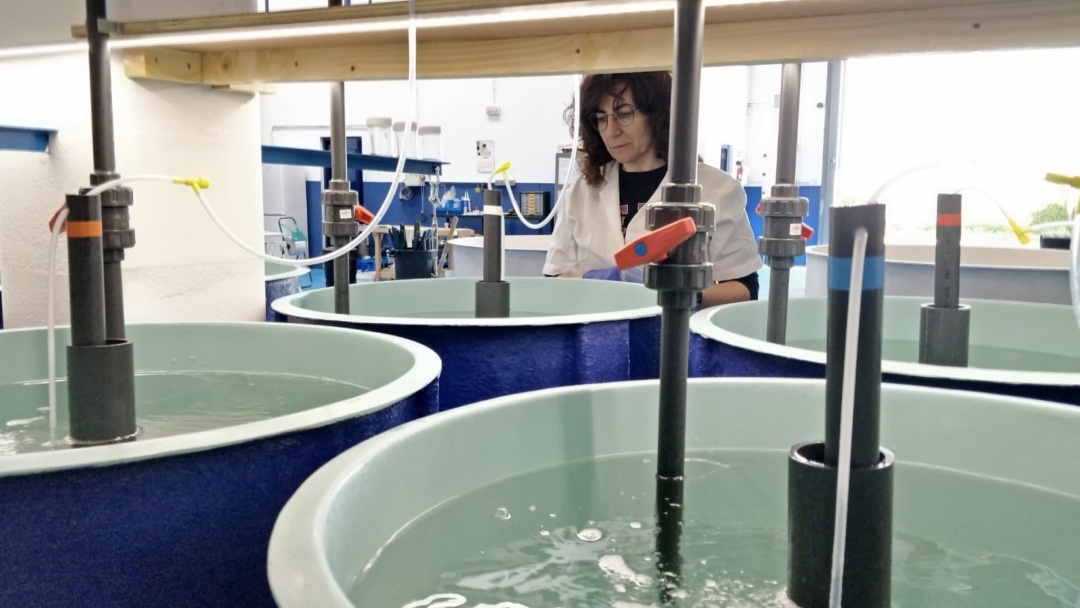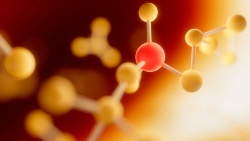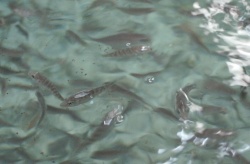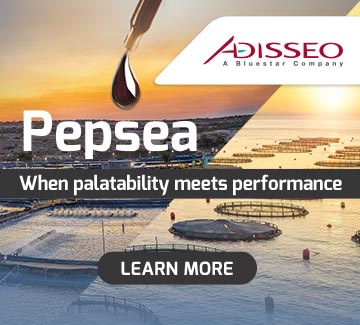 Rocío Robles during trials at Testing Blue facilities
Rocío Robles during trials at Testing Blue facilities
As Mediterranean waters continue to warm, fish farmers face growing challenges in managing the impacts of climate change on aquaculture species. European seabass (Dicentrarchus labrax), one of the region’s most important farmed species, is particularly vulnerable to heatwaves, with water temperatures in shallow coastal areas often surpassing 33-34ºC during summer months. Researchers are now exploring nutritional strategies, including feed additives, to help European seabass cope with thermal stress and maintain performance under increasingly extreme conditions.
A new study led by Testing Blue SL (Puerto Real, Spain) in collaboration with Adisseo, and presented recently at Aquaculture Europe 2025 in Valencia, has benchmarked different health-promoting additives for their capacity to improve heat stress tolerance in European seabass.
The trial exposed fish to gradually increasing temperatures in a recirculating aquaculture system (RAS), reaching a peak of 32ºC to simulate heatwave scenario.
Five diets were tested: a control, HeatPro (Adisseo), H1, R2 and K8. Coded diets referred to feeds supplemented with other commercial additives intended to support fish in dealing with heat stress. After one week at 32ºC, mortality occurred across all groups, but significant differences in survival emerged. Fish fed HeatPro diet recorded the highest survival (95.24%), followed by fish fed H1 (92.86%) and then the control group (88.10%).
Dr Rocío Robles, lead researcher at Testing Blue, explained: “What we saw is that not all additives work in the same way. HeatPro was particularly effective in improving survival and performance (SGR and FCR) during the heat stress period and reducing key stress markers. Less ROS accumulation due to the Heat Pro supplementation induced less need for enzymatic activity (SOD, CAT, GPX).
Growth and feed performance indicators also suggested benefits from dietary supplementation. While no significant differences were detected in specific growth rate (SGR) or feed conversion ratio (FCR) across treatments, seabass fed HeatPro achieved a 16% improvement in growth and a 20% reduction in FCR compared with control during the recovery period.
Physiological and biochemical analyses reinforced these results. Fish fed HeatPro showed reduced plasma cortisol, glucose and lactate levels (stress biomarkers). At the molecular level, HeatPro diet was associated with reduced antioxidant and heat stress protein expression (SOD, PRDX3 and HSP70) and enhanced recovery signals, such as increased IGF-1 expression. Reduction in these biomarkers indicated that HeatPro supplemented fish showed greater resilience in coping with heat stress.
Histological analysis confirmed that all groups experienced liver alterations at subclinical level linked to the high temperatures. Nevertheless, the combined data points to the capacity of specific feed additives to enhance resilience.
“Heat stress is one of the major bottlenecks for seabass farming in the Mediterranean,” added Robles. “Our results indicate that nutritional tools can help farmers protect fish welfare and performance during critical summer months providing extra antioxidant capacity to the fish”.




